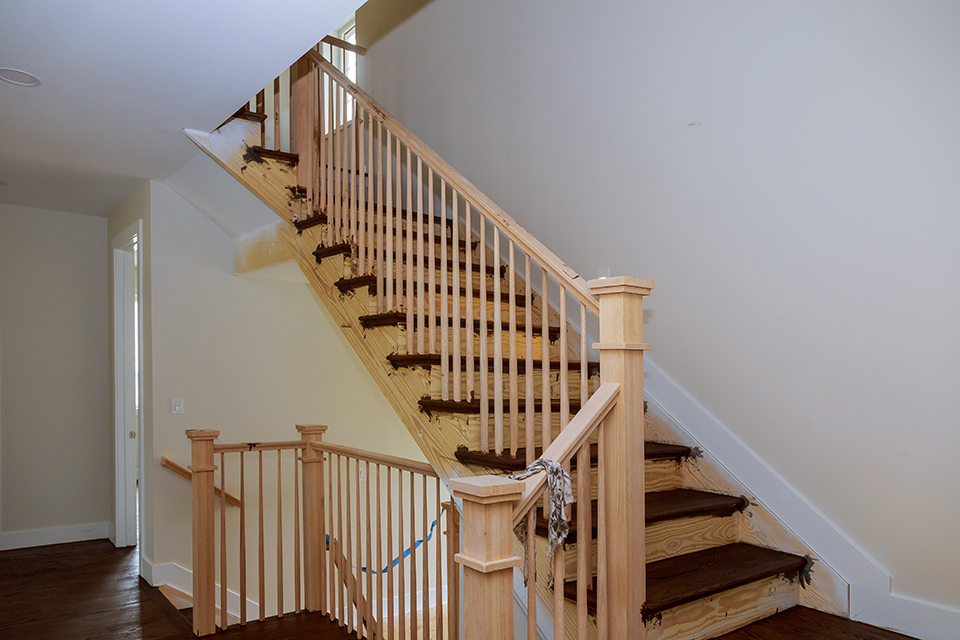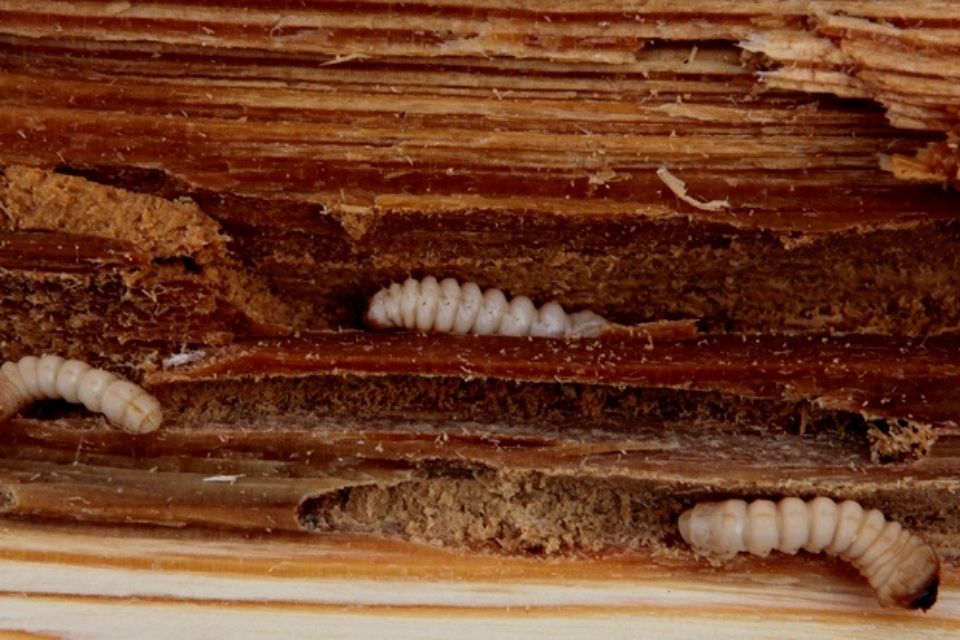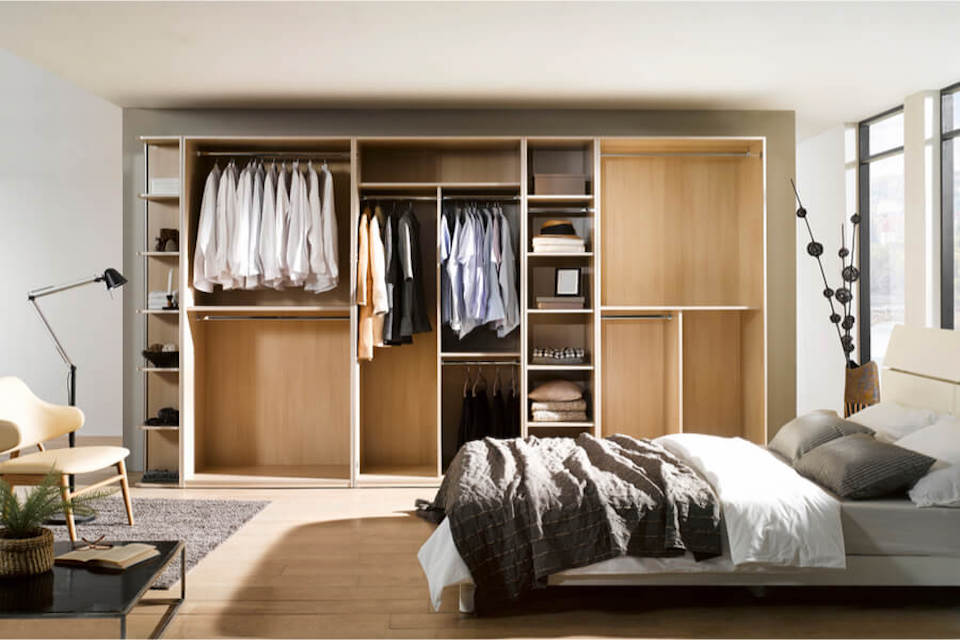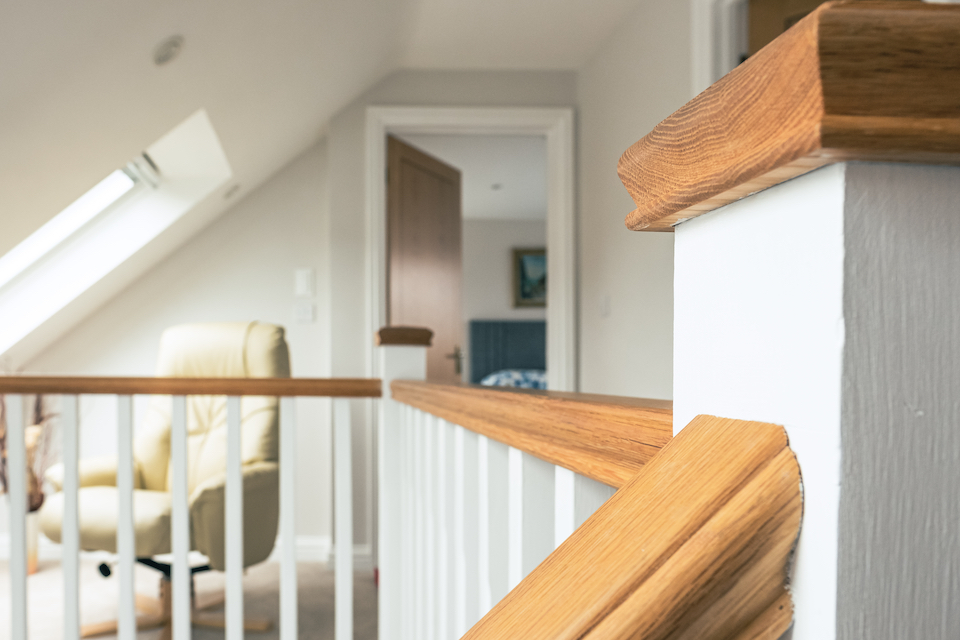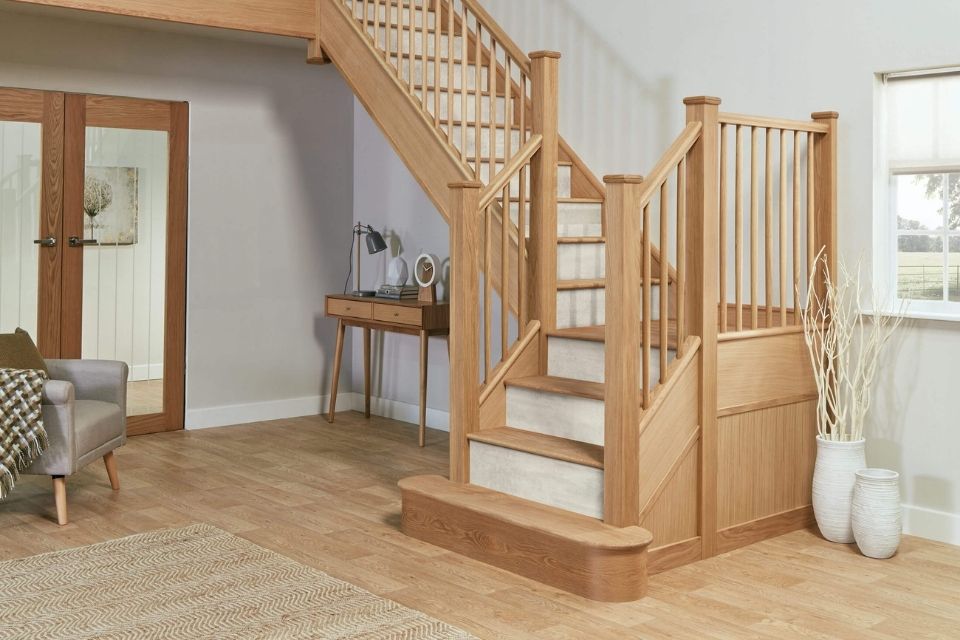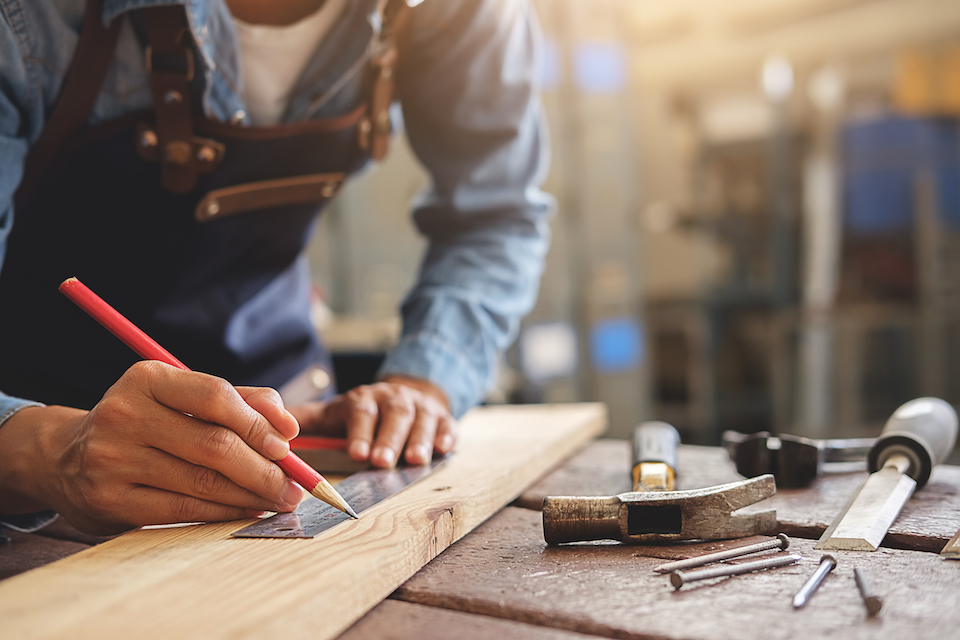How Much Does a Handrail Installation Cost?
A handrail, no matter how large or small your budget can significantly impact the appearance and feel of your home.
This article will tell you everything you need to know about supplies, costs, and more to make an informed decision about your handrail.
Prices vary according to the following factors:
- Railing material currently in use
- Brand-new railing material
- Railing design (spiral, straight, etc.)
- Length of the railing
All these factors
If your stairway is more comprehensive than 1m, you must install wall-mounted handrails. This is accomplished by installing either a mop stick handrail or a pig’s ear handrail.
Stair railing costs are typically quoted for each linear foot. A typical stairway requires a rail that is 25 feet long, though larger or even more complex models can necessitate a longer rail.
The cost of installing a wood stair railing is determined by the materials used and the labour involved. The wood railing price varies depending on whether you buy a prefabricated handrail or wood to start making your custom railing.
In either case, the price per foot will differ depending on the species of wood used. If you purchase a prefabricated wood stair railing, the finish of the railing will also determine the final cost.
Most carpenters charge by the hour. The cost of the installation will vary depending on its complexity. If the carpenter will have to make custom railing out of raw lumber, expect to pay more.
Speaking with a few carpenters before hiring will ensure that you select the best skill-cost balance.
The typical cost of installing a handrail range between £80 and £150, depending on the number of handrails needed. Your handyman will typically charge between £100 and £150 per day.
Stair railings are not all the same prices. Wrought iron railings, for instance, can range in price from £100 to £700 per linear foot, whereas simple wooden railings will cost between £30 and £70 per linear foot.
Fitting a single handrail will cost between £95 and £145, and fitting double handrails will cost between £130 and £270. So when selecting a new railing, keep your budget in mind.
Wood stair railing is adaptable if installed and maintained properly. Therefore, unless you are an expert carpenter, you should never attempt it as a DIY project.
Even though there are many easy-to-install railings on the market, hiring a professional will ensure that your railing is stable and the stairs are safe. This ensures that you have a one-of-a-kind design that enhances your interior decor without turning your stairway into a death trap.
Although this is a do-it-yourself project, attaching handrails to walls can cause damage. If you don't do it correctly, you may pay not only for somebody to attach them properly but also for someone to repair the damage you've caused.
The quality of the handrail you purchase will be the most expensive variable in the overall cost. Therefore, budget options should be considered to decrease your overall costs.
Handrail Prices
The table below will break down the costs to install a handrail:
| Job | Cost |
|---|---|
| Handrail installation | £80 - £150 |
| Wrought iron railings | £100 - £700 per linear foot |
| Wooden railings | £30 - £70 per linear foot |
| Single handrail | £95 - £140 |
| Double handrail | £130 - £270 |
- How Much Does a Handrail Installation Cost?
- What are the Supply Costs for a Handrail Installation?
- What are the Additional Costs of Installing a Handrail?
- Tradesmen Costs for Installing a Handrail
- How Long Does It Take to Install a Handrail?
- Types of Handrails
- How Much Does It Cost to Remove a Handrail?
- FAQs
- Sources
What are the Supply Costs for a Handrail Installation?
A handrail is typically installed at the height of 34 to 38 inches and should be able to support 200 pounds or over for safety.
Wall-mounted handrails are the most cost-effective option, but open stairwells may require a rail mounted on the open end with balusters or spindles to reach building codes. However, each municipality will have its own set of rules.
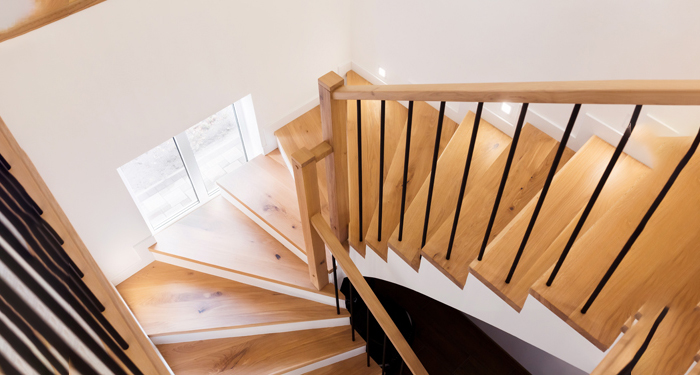
But, more importantly, handrails can improve the aesthetics of your stairway, and there are a variety of design styles and types to choose from. The right handrail could either blend in with the rest of your home décor or stand out as a focal point.
Here we will go through the different supplies and their costs for a handrail installation, so if you want to DIY the project, here is what you will need!
Before you go shopping for stair handrails, measure from the top landing's nosing to the floor just at the bottom of the stairs and add 2 feet.
This is the size of stair railing material that you will require. Lumberyards and home centres will have a code-approved handrail and other materials you'll need.
You will need a 4-foot level, which will cost between £7 and £20 depending on the quality and brand.
A drill bit set will cost between £30 and £35; a cordless drill will cost between £35 and £60, and you can rent a drill for between £25 and £30.
A hammer will cost you between £4 and £20, while a metre saw will cost you between £10 and £60, depending on the quality.
A stud finder costs between £20 and £25, and a tape measure costs between £1.50 and £7.
For materials, you will need sandpaper which costs £1 - £7. 4d finish nails usually cost £9 - £15, depending on how many you need. Epoxy will cost £10 - £30, masking tape costs around £1 - £3.
Finally, wood glue will cost £6 - £20.
Handrail brackets will cost £11 - £20, and you will usually need about three brackets. White oak handrails cost £11 - £200, pine handrails cost £8 - £62, and primed wood handrails cost £9 - £53.
Glass handrail brackets start at £7 - £20 for a unique handrail that will add more natural light.
Stairway handrails must be carefully placed to ensure the best height for your staircase. To determine the length of your handrail, take measurements of your stairway up the angle.
If the landing necessitates a balustrade, you should determine the length of the handrail required to accommodate this extra length.
Handrails are typically sold in predetermined lengths of 1.8m, 2.4m, 3.6m, and 4.2m. Choose the length that best fits your measurements. In some cases, you could be able to get both your stairway and landing handrail from a single long piece of wood.
The table below will breakdown the cost of supplies when installing a handrail:
| Supply | Cost |
|---|---|
| 4-foot level | £7 - £20 |
| Drill bit set | £30 - £35 |
| Cordless drill | £35 - £60 |
| Cordless drill rent | £25 - £30 |
| Hammer | £4 - £20 |
| Meter saw | £10 - £60 |
| Stud finder | £20 - £25 |
| Tape measure | £1.50 - £7 |
| Sandpaper | £1 - £7 |
| 4D finish nails | £9 - £15 |
| Epoxy | £10 - £30 |
| Masking tape | £1 - £3 |
| Wood glue | £6 - £20 |
| Handrail brackets | £11 - £20 |
| White oak handrail | £11 - £200 |
| Pine handrail | £8 - £62 |
| Primed wood handrail | £9 - £53 |
| Glass handrail | £7 - £20 |
What are the Additional Costs of Installing a Handrail?
Every home and stairwell is unique, but four major factors influence how much a rail installation costs. A few of these considerations add time and effort, while others raise the cost of materials.
In either case, requesting a detailed estimate before committing to a project is critical.
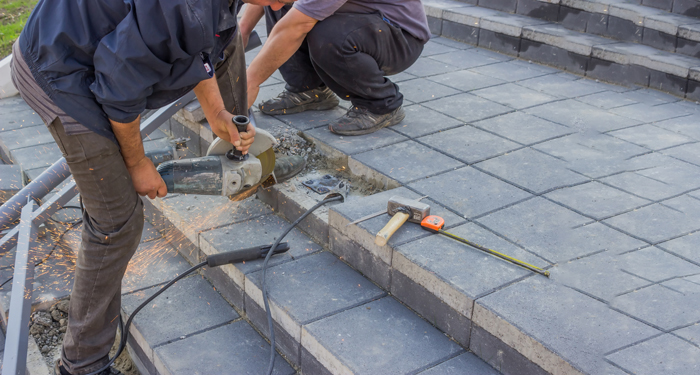
In this section, we will go through the additional costs of installing a handrail so you know what to expect.
New Flooring
When installing a new handrail, you may decide to have a carpenter in to change the decor to match your new handrail.
If you're going to make the wise investment of installing a new staircase in your home, it could be a good idea to evaluate your flooring, especially if your staircase will have a specific type of flooring.
New flooring now includes a wide range of options, from carpets to laminates and everything in between. A 15sqm space will cost you between £400 and £1,500.
Vinyl and carpet are at the low end of the spectrum, while Karndean and tiled floors are at the high end.
If you choose a hard or softwood staircase, it's good to get wood flooring just at the bottom of the stairs to match the décor.
Wooden flooring, like staircases, has a wide price range, with options ranging from £20 per square metre to around £50 per m2.
In every case, new flooring is a good investment, so why not revitalise your entire home at once if you have the funds?
In the UK, the average hourly rate for a carpenter is around £20 - £40. The costs of a joiner and a carpenter are usually about the same.
Those in the London area can expect to pay more for this type of work than those in the North or other places in the UK.
You will also need to factor in the cost of the wood for the project. This will vary on the type of wood you choose, the quality of the wood, and where you buy the wood.
If you're working on a bigger project, you can save money by purchasing your wood.
For further information, please refer to our guide on the costs of flooring installation.
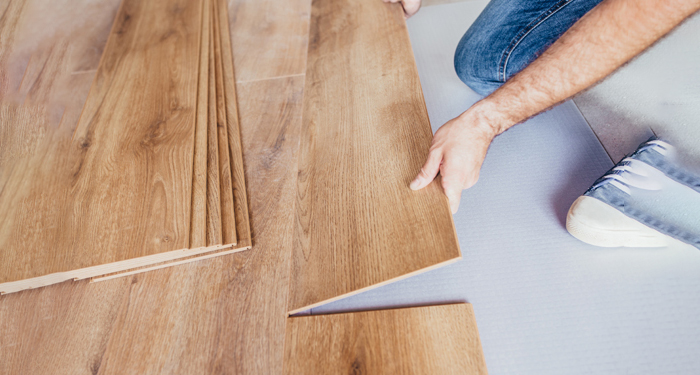
Painting a House
The cost of painting a house varies depending on the size of the property, the type of paint used, and the number of walls and rooms to be painted.
As a result, painting house prices could quickly skyrocket in ways that catch you off guard.
For example, an extra tin of paint may be required to paint a room that is just large enough to involve more than a single tin to complete, doubling the overall cost.
A two-bedroom house will cost between £380 and £1,100. A 3 Bedroom House will cost between £500 and £1,800, while a 5 Bedroom House will cost between £500 and £1,800. They range from £700 to £2,300.
Most of any additional costs will come from wall preparation and any repairs which need to be made to the ceilings or woodwork. For example, it may be necessary to remove old wallpaper and thick layers of discoloured paint or fill cracks.
Repairs to the wall and ceiling plasterwork are the most important added cost you are likely to face when painting a house. This can range from mild tidiness to extensive plastering of the whole walls.
Decorators typically use a caulk, also known as decorator's filler, or an all-purpose filler for minor work like filling cracks. Caulk tubes will cost no more than £2 - £4 for approximately 350ml.
If many extensive repairs are required, you may be required to re-plaster. Expect to pay around £100 for a small patch of plastering work that takes 2 - 3 hours.
A full wall, or 3 - 4 hours of labour, will cost about £150. Plastering an entire room will cost around £200 for a small room and around £500 for a large room.
Plastering quotes for halls, stairwells, and landings will range between £300 and £500.
Rather than painting directly on the plasterwork, you could decide that papering the walls will be more even finished. Patterned wallpaper for painting costs about £5 - £12 per roll (5M²).
For further information, please refer to our guide on the costs ofpainting a house.
New Staircase
Most of us probably don't give our stairs much thought, and we often stick to the same flight of stairs that were there when we moved in, with maybe a lick of paint now and then to spruce them up.
However, if your stairs have rotted away with ominous creaks and scuffed bannisters, it may be time to replace them.
A plain staircase will cost between £600 and £1,500; an L-shaped staircase will cost between £700 and £1,600; a U-shaped staircase will cost between £1,000 and £2,000, and a winder staircase will cost between £1,100 and £2,250.

A middle landing costs between £1,100 and £2,500, while a spiral staircase ends up costing between £1,600 and £6,000.
The typical labour cost to install the new staircase for you will be around £150 - £250 per day, with the job taking between 1 and 3 days.
There are a few stages to installing a staircase that should not be rushed, most of which revolve around measuring the spaces to ensure that everything fits when installed.
It may appear that the joiner is wasting so much time by triple checking everything, but there must be no mistakes at this stage, and even a single millimetre can cause a major problem later on.
For further information, please refer to our guide on the costs ofstaircase installation.
Amount of Tradespeople
The amount of tradespeople can have an impact on the overall cost. If the job is quite large, you may have to hire over one tradesperson to finish it for you. The more tradespeople on the job, the more you can assume to pay for the work.
Time Extension
As with any job, some things will go wrong, which will result in more time being added to the job. The longer it takes to complete the job, the more you should expect to pay in total for the work. Extra time is typically charged on an hourly basis.
Size
The larger the stairway, the more materials required, and the installation would take longer. All of this increases the cost.
Complexity
Numerous stair flights or curved designs increase costs, while a simple, straight stairway with a single rail is the least expensive.
Handrail Design
The cost is heavily influenced by the material used to make the handrail. Wood is the cheapest option, followed by steel and aluminium in the middle and wrought iron at the top.
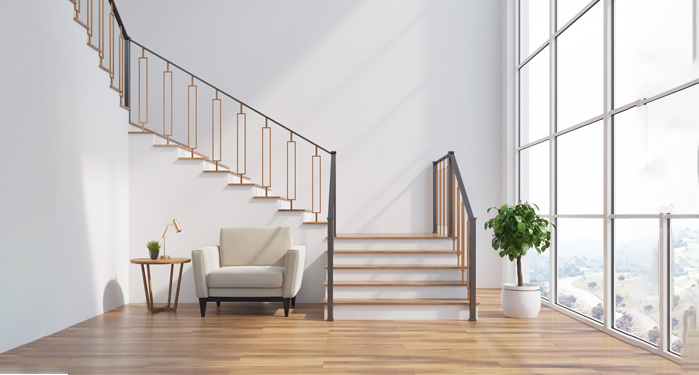
Preparation or Finishing Work
If an old handrail needs to be removed, or if the new handrail needs to be painted or finished, the installation cost would then rise.
In addition, preparation work can be costly if it necessitates the removal of debris and the repair of wall damage.
Tradesmen Costs for Installing a Handrail
When hiring a tradesman for building work, you must consider what specific jobs need to be done, as not all tradesmen can handle the same work.
For example, depending on the materials used, a Carpenter or a General Builder will generally be hired to build a staircase.
The most obvious place to begin is with staircase experts; however, this will vary depending on the style of staircase you have chosen, the design complexity, and the equipment used.
The following is a list of varied tradespeople you may need and the jobs they will be doing.
You will have to hire a professional tradesperson to properly install a handrail and make sure its safety complies.
Carpenters, general builders, carpet fitters, and labourers will all be able to provide their services, with day rates ranging from £200 to £300, depending on your location.
However, it should be noted that the handrail cost is not included in that figure.
If you plan to create your handrails out of wood, you must hire a carpenter. They will often be able to complete the job without the need for additional tradesmen, though this will vary based on the carpenter chosen.
A carpenter's day rate is usually around £125 - £150. The tradesman's skills and experience will determine this.
A general contractor is frequently hired to oversee the entire project. To complete the work, they can hire and manage subcontractors like carpenters and labourers.
Furthermore, when constructing a metal design, a general builder is frequently the best choice due to the robust nature of their experience and the labour price offered.
A general builder will typically cost between £100 and £150 each day to hire, depending on the amount of work required, the skills they acquire, and their level of experience.
When estimating the cost of a job, the least expensive type of tradesman, a labourer, must not be overlooked. Typically, an expert will use their labourer; but you should be aware of the costs associated with hiring them.
A simple labourer’s day rate is usually between £60 and £80 per day. They are used for heavy lifting, material moving, and jobs that do not require a particular skill.
The table below will break down the tradesmen's costs to install a handrail:
| Labour | Cost |
|---|---|
| Carpenter | £125 - £150 |
| Builder | £100 - £150 |
| Average labourer | £60 - £80 |
How Long Does It Take to Install a Handrail?
Numerous factors can influence how long it takes to install a new handrail. The most obvious are the project's complexity, the size of the construction, and the quality of the final product of the staircase.
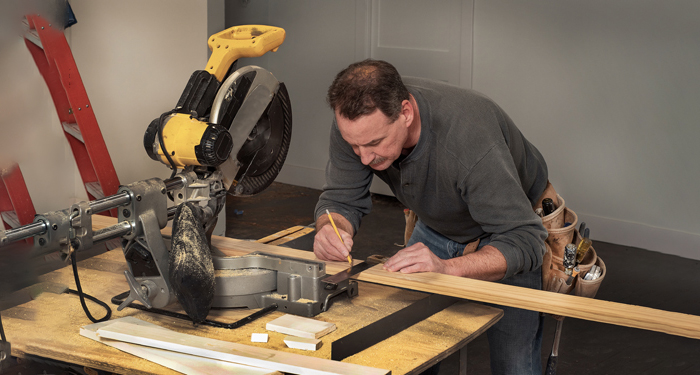
Here we will go through the durations to install a handrail and what could affect the overall time.
Building a complex U-shaped handrail will take nearly as long as a single straight design, taking 3-4 days versus two days.
A spiral handrail will take longer to build than a single straight design, taking about two days for the straight and three days for the spiral.
Handrails should have a minimum clearance of 2 1/4 inches between them and other objects. Handrails are typically 34 to 38 inches tall, measured upwards from the nose of the stair treads.
Handrails must always be shaped so that users can grip them firmly. When a handrail is merged into a guard rail system's top railing, it must be contoured to allow for gripping.
In addition, there must be no dangerous projections at the ends of the handrail.
Within 2 inches of the top edge of the rail, the handrail must be able to endure a 200-pound load applied downward or outward.
However, the plan's level of complexity, the tradesman's skills, and the number of tradespeople working on the project will also affect the duration.
For example, fitting a single handrail will take 2 - 4 hours, and fitting double handrails will take 4 - 6 hours.
When figuring out the time, it will take to build a new staircase, consider the following factors: access, the scale and project size, and the difficulty of your design.
Each factor has the potential to either increase or decreases the overall project duration. As a result, planning for that is critical when deciding when to begin construction.
Access
When trying to plan the building of a staircase among floors, the ability of your tradesmen to access the construction is a critical factor of time.
The ease with which materials can be passed to the site, through doors, and around hall corners should not be overlooked.
Second, it is critical to consider how well the staircase is used when designing access.
This must be considered during the project's design phase and will usually help determine the stairway style chosen for the project.
Scale
The scale you choose will help you identify the overall time it will take to install your staircase. The scale refers to the length and the width of each step, the number of steps, and the height of the staircase from the lower level.
This is all decided during the design phase of the building works and significantly impacts the project's cost.
Complexity
A staircase's complexity can vary based on the desired final version, materials used, and even the skills of the tradespeople hired to build it. The more complicated a staircase design, the more time, skill, and money it will take to complete.
A straight staircase is faster to build than a U-shaped or half-landing staircase. Spiral staircase designs will require more time and skill than just a simple curved staircase design.
Decoration
Decorations such as glass balustrades and stone or tile floor coverings will greatly increase the build time and overall construction time.
Re-plastering may be required when a staircase is positioned against a wall. It is common to practice painting or staining the staircase to achieve the desired design or aesthetic look.
The table below will break down the duration of to install of a handrail:
| Handrail | Duration |
|---|---|
| Single handrail | 2 – 4 hours |
| Double handrail | 4 – 6 hours |
Types of Handrails
Softwood Handrails
Railing prices vary greatly depending on the material. Wood costs between £30 and £75 for every linear foot at the low end. Wood is a material that is used in traditional and contemporary decor styles.
Furthermore, it can be completed with any stain colour you desire to match the rest of your home.
Softwood railings are much less expensive than hardwood railings, but they are also less durable. So if you're building an outdoor porch or deck out of wood, always use weatherproof, pressure-treated hardwood for the railing.
Pros
- Affordable
Cons
- Less durable
Steel Handrails
Steel rails can cost between £60 and £110 per linear foot, while aluminium costs between £70 and £80.
Metal handrails are sturdier, making them perfect for busy stairwells, but they can be difficult to incorporate into more woodsy decor designs.
However, metal is also the best option for exterior handrails because of its durability and weatherproof qualities.
Pros
- Sturdy
- Good for busy stairways
Cons
- It can be hard to match with décor
Wrought Iron Handrails
Wrought iron will cost £100 per linear foot at the high end, with prices reaching £900 per foot for the most intricate handmade rails.
However, with a little thought, wrought iron will provide the most outstanding handrail designs and can suit both classic and contemporary decors.
Pros
- Unique design
- Suit classic and contemporary décor
Cons
- Expensive
Built-In Handrails
These run along the tops of the spindles and serve as a balustrade. When deciding on a handrail for a balustrade, you can choose between grooved and ungroomed styles.
Spindles are typically used with stairway handrails with a 32mm or 41mm groove. Ungroomed handrails look best when combined with metal spindles, glass panels, and clamps or as a wall-mounted handrail.
In both cases, a newel post is used to support the handrail at either end. They typically cost between £20 and £60 per M2.
Wall-mounted handrails are a separate component of the balustrade that can be used in addition to or instead of a balustrade in confined staircases. Pig's ear and mop stick are the two most popular styles of wall-mounted handrails.
Pros
- Most popular
- Good for décor
- Affordable
Cons
- None
Pigs Ear Handrails
Pigs ear handrails are a popular option for wall-mounted handrails because they can be attached to the wall directly without brackets.
These handrails have a good grip and are close to the wall, making them great for thin staircases. A cross-grain pellet can be used to fill the screw holes left by attaching the handrail to the wall (a tapered wooden pellet). These cost £40 - £80 per M2.
Pros
- Wall-mounted
- Good grip
- Good for thin stairways
Cons
- Compact
Mop Stick Handrails
Handrail brackets secure mop stick handrails to the wall, making them a more decorative option. Handrail end caps, which come in various styles, from beautiful filigree models to modern octagonal styles, can also be added to complete the look. This handrail costs £20 - £40 per M2.
Pros
- Decorative option
- Come in different styles
Cons
- None
How Much Does It Cost to Remove a Handrail?
If you are substituting the handrail on your staircase, you can now remove the old handrail. Cutting through it at either end, near the newel posts, with a fine-toothed hand saw is all required to remove the handrail.
Handrail removal costs between £100 and £150 on average; however, heavier handrails in more difficult locations may cost between £200 and £300. Depending on how simple the removal is, it will take 3 to 4 hours.
FAQs
Q: Is it a legal requirement to have a handrail on the stairs in the UK?
A: Stairs must have a handrail on one side, whether they are less than one metre, and on both sides, if they are wider. However, the bottom two steps of stairs do not require a handrail. Handrail height is between 900mm and 1000mm assessed from the top of a handrail to the pitch line in all buildings.
Q: What is the best type of handrail?
A: Steel is a popular material for commercial entry and exit stairs and industrial staircase railings. Steel is also an excellent choice for stair stringers. In addition, Galvanised or stainless steel is frequently used to prevent rusting.
Q: What is an average handrail height?
A: According to current ADA standards, the top of handrail gripping surfaces must be 34 inches minimum and 38 inches maximum assessed vertically above walking surfaces, stair nosings, and slope surfaces with a slope greater than a 1:20 slope.
Q: How do you choose a handrail?
- Define your personality.
- When building or renovating a home, a specific style is usually chosen.
- Always keep safety in mind. Although the style is important, stair rails were designed for safety.
- Style should complement the design.
- Attention to detail is critical.
Q: What is the difference between a handrail and a bannister?
A: A handrail is a rail that can be held on the edge of a staircase, ramp, or another walkway and serves as a support or guard, whereas a bannister is a handrail attached to the side of a staircase.

